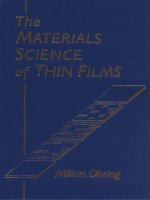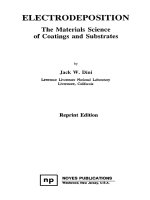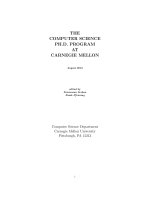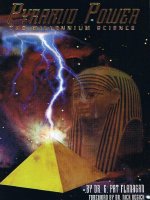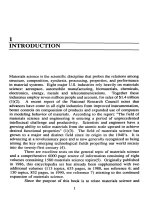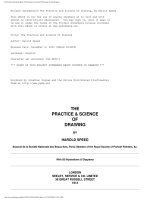chemistry the central science plus mastering chemistry 12th
Bạn đang xem bản rút gọn của tài liệu. Xem và tải ngay bản đầy đủ của tài liệu tại đây (44.28 MB, 1,195 trang )
TWELFTH EDITION
CHEMISTRY
T
H
E
C
E
N
T
R
A
L
S
C
I
E
N
C
E
TWELFTH EDITION
CHEMISTRY
T
H
E
C
E
N
T
R
A
L
S
C
I
E
Theodore L. Brown
University of Illinois at Urbana-Champaign
H. Eugene LEMay, Jr.
University of Nevada, Reno
Bruce E. Bursten
University of Tennessee, Knoxville
Catherine J. Murphy
University of Illinois at Urbana-Champaign
Patrick M. Woodward
The Ohio State University
N
C
E
Editor in Chief, Chemistry: Adam Jaworski
Acquisitions Editor: Terry Haugen
Marketing Manager: Erin Gardner
Project Editor: Jennifer Hart
Editorial Assistant: Catherine Martinez
Marketing Assistant: Nicola Houston
VP/Executive Director, Development: Carol Trueheart
Development Editor, Text: Irene Nunes
Development Editor, Art: Greg Gambino
Managing Editor, Chemistry and Geosciences: Gina M. Cheselka
Project Manager: Shari Toron
Full-Service Project Management/Composition: Rebecca Dunn/Preparé, Inc.
Senior Manufacturing and Operations Manager: Nick Sklitsis
Operations Specialist: Maura Zaldivar
Art Director: Mark Ong
Senior Technical Art Specialist: Connie Long
Art Studio: Precision Graphics
Photo Research Manager: Elaine Soares
Photo Researcher: Eric Schrader
Senior Media Producer: Angela Bernhardt
Associate Media Producer: Kristin Mayo
Media Supervisor: Liz Winer
Production Coordinator, Media: Shannon Kong
Electrostatic Potential Maps: Richard Johnson, Chemistry Department, University of New Hampshire
Cover Credit: Graphene by Dr. Jannik C. Meyer of the University of Ulm, Germany
Copyright © 2012, 2009, 2006, 2003, 2000, 1997, 1994, 1991, 1988, 1985, 1981, 1977 Pearson Education, Inc., publishing as
Pearson Prentice Hall. All rights reserved. Manufactured in the United States of America. This publication is protected by
Copyright and permission should be obtained from the publisher prior to any prohibited reproduction, storage in a retrieval
system, or transmission in any form or by any means, electronic, mechanical, photocopying, recording, or likewise. To obtain
permission(s) to use material from this work, please submit a written request to Pearson Education, Inc., Permissions
Department, 1900 E. Lake Ave., Glenview, IL 60025.
Many of the designations used by manufacturers and sellers to distinguish their products are claimed as trademarks. Where those
designations appear in this book, and the publisher was aware of a trademark claim, the designations have been printed in initial
caps or all caps.
Library of Congress Cataloging-in-Publication Data
Chemistry: the central science / Theodore L. Brown ... [et al.]—12th ed.
p. cm.
Includes bibliographical references and index.
ISBN 978-0-321-69672-4 (alk. paper)
1. Chemistry—Textbooks. I. Brown, Theodore L. (Theodore Lawrence), 1928QD31.3.C43145 2012
540—dc22
2010043754
Printed in the United States of America
10 9 8 7 6 5 4 3 2 1
ISBN-10: 0-321-69672-7/ISBN-13: 978-0-321-69672-4 (Student Edition)
ISBN-10: 0-321-76754-3/ISBN-13: 978-0-321-76754-7 (Exam Copy)
To our students,
whose enthusiasm and curiosity
have often inspired us,
and whose questions and suggestions
have sometimes taught us.
BRIEF CONTENTS
Preface xxv
About the Authors
1
2
3
4
5
6
7
8
9
10
11
12
13
14
15
16
17
18
19
20
21
22
23
24
xxxv
Introduction: Matter and Measurement 2
Atoms, Molecules, and Ions 38
Stoichiometry: Calculations with Chemical
Formulas and Equations 76
Reactions in Aqueous Solution 114
Thermochemistry 158
Electronic Structure of Atoms 206
Periodic Properties of the Elements 248
Basic Concepts of Chemical Bonding 288
Molecular Geometry and
Bonding Theories 330
Gases 382
Liquids and Intermolecular Forces 424
Solids and Modern Materials 462
Properties of Solutions 512
Chemical Kinetics 556
Chemical Equilibrium 610
Acid–Base Equilibria 650
Additional Aspects of Aqueous Equilibria 702
Chemistry of the Environment 748
Chemical Thermodynamics 784
Electrochemistry 826
Nuclear Chemistry 874
Chemistry of The Nonmetals 916
Transition Metals and Coordination
Chemistry 962
The Chemistry of Life: Organic and
Biological Chemistry 1004
APPENDICES
A Mathematical Operations 1051
B Properties of Water 1058
C Thermodynamic Quantities for Selected
Substances at 298.15 K (25 °C) 1059
D Aqueous Equilibrium Constants 1062
E Standard Reduction Potentials at 25 °C 1064
Answers to Selected Exercises
A-1
Answers to Give it Some Thought
Answers to Go Figure A-41
Glossary
G-1
Photo/Art Credits
vi
Index
I-1
P-1
A-33
CONTENTS
PREFACE xxv
About the Authors
1
xxxv
Introduction: Matter
and Measurement 2
1.1
THE STUDY OF CHEMISTRY 4
The Atomic and Molecular Perspective of Chemistry 4
Why Study Chemistry? 5
1.2
CLASSIFICATIONS OF MATTER 7
States of Matter 7 Pure Substances 7
Compounds 8 Mixtures 10
1.3
PROPERTIES OF MATTER 11
Physical and Chemical Changes 12
1.4
Elements 7
Separation of Mixtures 13
UNITS OF MEASUREMENT 14
SI Units 15 Length and Mass 16 Temperature 17
Derived SI Units 18 Volume 18 Density 19
1.5
UNCERTAINTY IN MEASUREMENT 20
Precision and Accuracy 21 Significant Figures 22
Significant Figures in Calculations 23
1.6
DIMENSIONAL ANALYSIS 25
Using Two or More Conversion Factors 27
Volume 28
Conversions Involving
CHAPTER SUMMARY AND KEY TERMS 30
KEY SKILLS 31
KEY EQUATIONS 31 VISUALIZING CONCEPTS 31
ADDITIONAL EXERCISES 35
CHEMISTRY PUT TO WORK Chemistry and the Chemical Industry 6
A CLOSER LOOK The Scientific Method 15
CHEMISTRY PUT TO WORK Chemistry in the News 20
STRATEGIES IN CHEMISTRY Estimating Answers 26
STRATEGIES IN CHEMISTRY The Importance of Practice 29
STRATEGIES IN CHEMISTRY The Features of this Book 30
2
Atoms, Molecules,
and Ions 38
2.1
THE ATOMIC THEORY OF MATTER 40
2.2
THE DISCOVERY OF ATOMIC STRUCTURE 41
Cathode Rays and Electrons 41
Model of the Atom 43
Radioactivity 43
The Nuclear
vii
viii
CONTENTS
2.3
THE MODERN VIEW OF ATOMIC STRUCTURE 44
Atomic Numbers, Mass Numbers, and Isotopes 46
2.4
ATOMIC WEIGHTS 47
The Atomic Mass Scale 47
Atomic Weight 48
2.5
THE PERIODIC TABLE 49
2.6
MOLECULES AND MOLECULAR COMPOUNDS 52
Molecules and Chemical Formulas 52 Molecular and Empirical
Formulas 53 Picturing Molecules 54
2.7
IONS AND IONIC COMPOUNDS 54
Predicting Ionic Charges 55
2.8
Ionic Compounds 56
NAMING INORGANIC COMPOUNDS 59
Names and Formulas of Ionic Compounds 59 Names and
Formulas of Acids 64 Names and Formulas of Binary
Molecular Compounds 65
2.9
SOME SIMPLE ORGANIC COMPOUNDS 66
Alkanes 66
Some Derivatives of Alkanes 66
CHAPTER SUMMARY AND KEY TERMS 67
KEY SKILLS 68
VISUALIZING CONCEPTS 69 ADDITIONAL EXERCISES 73
A CLOSER LOOK Basic Forces 46
A CLOSER LOOK The Mass Spectrometer 49
A CLOSER LOOK Glenn Seaborg and Seaborgium 52
CHEMISTRY AND LIFE Elements Required by Living Organisms 58
STRATEGIES IN CHEMISTRY Pattern Recognition 58
3
Stoichiometry:
Calculations with
Chemical Formulas
and Equations 76
3.1
CHEMICAL EQUATIONS 78
Balancing Equations 78
and Products 81
3.2
Indicating the States of Reactants
SOME SIMPLE PATTERNS OF CHEMICAL REACTIVITY 81
Combination and Decomposition Reactions 82
Reactions 83
3.3
FORMULA WEIGHTS 84
Formula and Molecular Weights 85
Chemical Formulas 85
3.4
Combustion
Percentage Composition from
AVOGADRO’S NUMBER AND THE MOLE 86
Molar Mass 88 Interconverting Masses and Moles 90
Interconverting Masses and Numbers of Particles 91
3.5
EMPIRICAL FORMULAS FROM ANALYSES 92
Molecular Formulas from Empirical Formulas 94
Combustion Analysis 95
3.6
QUANTITATIVE INFORMATION FROM BALANCED
EQUATIONS 96
CONTENTS
3.7
LIMITING REACTANTS 99
Theoretical Yields 102
CHAPTER SUMMARY AND KEY TERMS 104
KEY SKILLS 104
KEY EQUATIONS 104 VISUALIZING CONCEPTS 105
ADDITIONAL EXERCISES 111 INTEGRATIVE EXERCISES 113
STRATEGIES IN CHEMISTRY Problem Solving 86
CHEMISTRY AND LIFE Glucose Monitoring 90
STRATEGIES IN CHEMISTRY How to Take a Test 103
4
Reactions in Aqueous
Solution 114
4.1
GENERAL PROPERTIES OF AQUEOUS SOLUTIONS 116
Electrolytic Properties 116 Ionic Compounds in Water 117
Molecular Compounds in Water 118 Strong and Weak Electrolytes 118
4.2
PRECIPITATION REACTIONS 119
Solubility Guidelines for Ionic Compounds 120 Exchange
(Metathesis) Reactions 121 Ionic Equations 122
4.3
ACIDS, BASES, AND NEUTRALIZATION REACTIONS 124
Acids 124 Bases 125 Strong and Weak Acids and Bases 125
Identifying Strong and Weak Electrolytes 126 Neutralization
Reactions and Salts 127 Neutralization Reactions with Gas
Formation 129
4.4
OXIDATION-REDUCTION REACTIONS 131
Oxidation and Reduction 131 Oxidation Numbers 132 Oxidation
of Metals by Acids and Salts 133 The Activity Series 135
4.5
CONCENTRATIONS OF SOLUTIONS 139
Molarity 139 Expressing the Concentration of an Electrolyte 140
Interconverting Molarity, Moles, and Volume 140 Dilution 141
4.6
SOLUTION STOICHIOMETRY AND CHEMICAL ANALYSIS 144
Titrations 145
CHAPTER SUMMARY AND KEY TERMS 149
KEY SKILLS 149
KEY EQUATIONS 149 VISUALIZING CONCEPTS 150
ADDITIONAL EXERCISES 154 INTEGRATIVE EXERCISES 156
CHEMISTRY PUT TO WORK Antacids 130
A CLOSER LOOK The Aura of Gold 138
STRATEGIES IN CHEMISTRY Analyzing Chemical Reactions 138
CHEMISTRY AND LIFE Drinking too much Water Can Kill You 143
5
Thermochemistry 158
5.1
THE NATURE OF ENERGY 160
Kinetic Energy and Potential Energy 160 Units of Energy 162
System and Surroundings 162 Transferring Energy: Work
and Heat 163
5.2
THE FIRST LAW OF THERMODYNAMICS 164
Internal Energy 164 Relating ¢E to Heat and Work 165
Endothermic and Exothermic Processes 167 State
Functions 167
ix
x
CONTENTS
5.3
ENTHALPY 169
5.4
ENTHALPIES OF REACTION 172
5.5
CALORIMETRY 175
Heat Capacity and Specific Heat 175 Constant-Pressure
Calorimetry 177 Bomb Calorimetry (Constant-Volume
Calorimetry) 178
5.6
HESS’S LAW 181
5.7
ENTHALPIES OF FORMATION 183
Using Enthalpies of Formation to Calculate Enthalpies
of Reaction 185
5.8
FOODS AND FUELS 188
Foods 188
Fuels 190
Other Energy Sources 191
CHAPTER SUMMARY AND KEY TERMS 194 KEY SKILLS 195
KEY EQUATIONS 195 VISUALIZING CONCEPTS 196
ADDITIONAL EXERCISES 202 INTEGRATIVE EXERCISES 204
A CLOSER LOOK Energy, Enthalpy, and P-V Work 172
STRATEGIES IN CHEMISTRY Using Enthalpy as a Guide 175
CHEMISTRY AND LIFE The Regulation of Body Temperature 180
CHEMISTRY PUT TO WORK The Scientific and Political Challenges
of Biofuels 192
6
Electronic Structure
of Atoms 206
6.1
THE WAVE NATURE OF LIGHT 208
6.2
QUANTIZED ENERGY AND PHOTONS 210
Hot Objects and the Quantization of Energy 210
Effect and Photons 211
6.3
The Photoelectric
LINE SPECTRA AND THE BOHR MODEL 213
Line Spectra 213 Bohr’s Model 214 The Energy States of the
Hydrogen Atom 214 Limitations of the Bohr Model 216
6.4
THE WAVE BEHAVIOR OF MATTER 216
The Uncertainty Principle 217
6.5
QUANTUM MECHANICS AND ATOMIC ORBITALS 219
Orbitals and Quantum Numbers 220
6.6
REPRESENTATIONS OF ORBITALS 222
The s Orbitals 222
Orbitals 225
6.7
The p Orbitals 224
MANY-ELECTRON ATOMS 226
Orbitals and Their Energies 226
Exclusion Principle 227
6.8
The d and f
Electron Spin and the Pauli
ELECTRON CONFIGURATIONS 229
Hund’s Rule 229 Condensed Electron Configurations 231
Transition Metals 232 The Lanthanides and Actinides 232
CONTENTS
6.9
ELECTRON CONFIGURATIONS AND THE PERIODIC TABLE 233
Anomalous Electron Configurations 237
CHAPTER SUMMARY AND KEY TERMS 238
KEY SKILLS 239
KEY EQUATIONS 239 VISUALIZING CONCEPTS 240
ADDITIONAL EXERCISES 244 INTEGRATIVE EXERCISES 246
A CLOSER LOOK The Speed of Light 209
A CLOSER LOOK Measurement and the Uncertainty Principle 218
A CLOSER LOOK Probability Density and Radial Probability
Functions 224
A CLOSER LOOK Experimental Evidence for Electron Spin 227
CHEMISTRY AND LIFE Nuclear Spin and Magnetic Resonance
Imaging 228
7
Periodic Properties
of the Elements 248
7.1
DEVELOPMENT OF THE PERIODIC TABLE 250
7.2
EFFECTIVE NUCLEAR CHARGE 251
7.3
SIZES OF ATOMS AND IONS 254
Periodic Trends in Atomic Radii 255
Ionic Radii 256
7.4
Periodic Trends in
IONIZATION ENERGY 259
Variations in Successive Ionization Energies 259 Periodic Trends in
First Ionization Energies 260 Electron Configurations of Ions 262
7.5
ELECTRON AFFINITIES 263
7.6
METALS, NONMETALS, AND METALLOIDS 264
Metals 265
7.7
Nonmetals 267
TRENDS FOR GROUP 1A AND GROUP 2A METALS 268
Group 1A: The Alkali Metals 269
Earth Metals 272
7.8
Metalloids 268
Group 2A: The Alkaline
TRENDS FOR SELECTED NONMETALS 273
Hydrogen 273
Halogens 274
Group 6A: The Oxygen Group 273
Group 8A: The Noble Gases 276
Group 7A: The
CHAPTER SUMMARY AND KEY TERMS 277
KEY SKILLS 278
KEY EQUATIONS 279 VISUALIZING CONCEPTS 279
ADDITIONAL EXERCISES 283 INTEGRATIVE EXERCISES 285
A CLOSER LOOK Effective Nuclear Charge 253
CHEMISTRY PUT TO WORK Ion Movement Powers Electronics 258
CHEMISTRY AND LIFE The Improbable Development of
Lithium Drugs 271
8
Basic Concepts of
Chemical Bonding 288
8.1
LEWIS SYMBOLS AND THE OCTET RULE 290
The Octet Rule 290
8.2
IONIC BONDING 291
Energetics of Ionic Bond Formation 292 Electron Configurations
of Ions of the s- and p-Block Elements 294 Transition-Metal
Ions 296
xi
xii
CONTENTS
8.3
COVALENT BONDING 296
Lewis Structures 297
8.4
Multiple Bonds 298
BOND POLARITY AND ELECTRONEGATIVITY 298
Electronegativity 299 Electronegativity and Bond
Polarity 300
Dipole Moments 301 Differentiating Ionic and
Covalent Bonding 304
8.5
DRAWING LEWIS STRUCTURES 305
Formal Charge and Alternative Lewis Structures 307
8.6
RESONANCE STRUCTURES 309
Resonance in Benzene 311
8.7
EXCEPTIONS TO THE OCTET RULE 312
Odd Number of Electrons 312 Less than an Octet of Valence
Electrons 312 More than an Octet of Valence Electrons 313
8.8
STRENGTHS OF COVALENT BONDS 315
Bond Enthalpies and the Enthalpies of Reactions 316
Bond Enthalpy and Bond Length 318
CHAPTER SUMMARY AND KEY TERMS 321
KEY SKILLS 322
KEY EQUATIONS 322 VISUALIZING CONCEPTS 322
ADDITIONAL EXERCISES 327 INTEGRATIVE EXERCISES 328
A CLOSER LOOK Calculation of Lattice Energies:
The Born–Haber Cycle 295
A CLOSER LOOK Oxidation Numbers, Formal Charges,
and Actual Partial Charges 309
CHEMISTRY PUT TO WORK Explosives and Alfred
Nobel 319
9
Molecular Geometry
and Bonding
Theories 330
9.1
MOLECULAR SHAPES 332
9.2
THE VSEPR MODEL 334
Effect of Nonbonding Electrons and Multiple Bonds on Bond
Angles 338 Molecules with Expanded Valence Shells 339
Shapes of Larger Molecules 342
9.3
MOLECULAR SHAPE AND MOLECULAR POLARITY 343
9.4
COVALENT BONDING AND ORBITAL OVERLAP 345
9.5
HYBRID ORBITALS 346
sp Hybrid Orbitals 346 sp2 and sp3 Hybrid Orbitals 348
Hybrid Orbital Summary 350
9.6
MULTIPLE BONDS 351
Resonance Structures, Delocalization, and p Bonding 355
General Conclusions 356
9.7
MOLECULAR ORBITALS 358
The Hydrogen Molecule 358
Bond Order 360
CONTENTS
9.8
PERIOD 2 DIATOMIC MOLECULES 361
Molecular Orbitals for Li2 and Be2 361 Molecular Orbitals from 2p
Atomic Orbitals 362 Electron Configurations for B2 through Ne2 365
Electron Configurations and Molecular Properties 366
Heteronuclear Diatomic Molecules 369
CHAPTER SUMMARY AND KEY TERMS 372
KEY SKILLS 373
KEY EQUATION 373 VISUALIZING CONCEPTS 373
ADDITIONAL EXERCISES 378 INTEGRATIVE EXERCISES 380
CHEMISTRY AND LIFE The Chemistry of Vision 357
A CLOSER LOOK Phases in Atomic and Molecular Orbitals 363
CHEMISTRY PUT TO WORK Orbitals and Energy 370
10
Gases 382
10.1
CHARACTERISTICS OF GASES 384
10.2
PRESSURE 385
Atmospheric Pressure and the Barometer 385
10.3
THE GAS LAWS 387
The Pressure–Volume Relationship: Boyle’s Law 388
The Temperature–Volume Relationship: Charles’s Law 389
The Quantity–Volume Relationship: Avogadro’s Law 390
10.4
THE IDEAL-GAS EQUATION 391
Relating the Ideal-Gas Equation and the Gas Laws 394
10.5
FURTHER APPLICATIONS OF THE IDEAL-GAS
EQUATION 395
Gas Densities and Molar Mass 396
Chemical Reactions 397
10.6
Volumes of Gases in
GAS MIXTURES AND PARTIAL PRESSURES 399
Partial Pressures and Mole Fractions 400
Water 401
10.7
Collecting Gases over
THE KINETIC-MOLECULAR THEORY OF GASES 402
Distributions of Molecular Speed 403 Application of
Kinetic-Molecular Theory to the Gas Laws 404
10.8
MOLECULAR EFFUSION AND DIFFUSION 405
Graham’s Law of Effusion 407
Free Path 408
10.9
Diffusion and Mean
REAL GASES: DEVIATIONS FROM IDEAL BEHAVIOR 409
The van der Waals Equation 411
CHAPTER SUMMARY AND KEY TERMS 413
KEY SKILLS 414
KEY EQUATIONS 414 VISUALIZING CONCEPTS 415
ADDITIONAL EXERCISES 421 INTEGRATIVE EXERCISES 422
CHEMISTRY AND LIFE Blood Pressure 388
STRATEGIES IN CHEMISTRY Calculations Involving
Many Variables 393
CHEMISTRY PUT TO WORK Gas Pipelines 398
A CLOSER LOOK The Ideal-Gas Equation 405
CHEMISTRY PUT TO WORK Gas Separations 408
xiii
xiv
CONTENTS
11
Liquids and
Intermolecular
Forces 424
11.1
A MOLECULAR COMPARISON OF GASES, LIQUIDS,
AND SOLIDS 426
11.2
INTERMOLECULAR FORCES 428
Dispersion Forces 429 Dipole–Dipole Forces 430 Hydrogen
Bonding 431 Ion–Dipole Forces 434 Comparing Intermolecular
Forces 434
11.3
SELECT PROPERTIES OF LIQUIDS 437
Viscosity 437
11.4
Surface Tension 437
PHASE CHANGES 438
Energy Changes Accompanying Phase Changes 439
Curves 440 Critical Temperature and Pressure 441
11.5
Heating
VAPOR PRESSURE 442
Volatility, Vapor Pressure, and Temperature 443
and Boiling Point 444
11.6
Vapor Pressure
PHASE DIAGRAMS 445
The Phase Diagrams of H2O and CO2 446
11.7
LIQUID CRYSTALS 448
Types of Liquid Crystals 449
CHAPTER SUMMARY AND KEY TERMS 452
KEY SKILLS 453
VISUALIZING CONCEPTS 453 ADDITIONAL EXERCISES 459
INTEGRATIVE EXERCISES 460
CHEMISTRY PUT TO WORK Ionic Liquids 436
A CLOSER LOOK The Clausius–Clapeyron Equation 444
CHEMISTRY PUT TO WORK Liquid Crystal Displays 451
12
Solids and Modern
Materials 462
12.1
CLASSIFICATIONS OF SOLIDS 464
12.2
STRUCTURES OF SOLIDS 465
Crystalline and Amorphous Solids 465
Lattices 465 Filling the Unit Cell 467
12.3
METALLIC SOLIDS 468
The Structures of Metallic Solids 469
Alloys 473
12.4
Molecular-Orbital Model 478
IONIC SOLIDS 481
Structures of Ionic Solids 482
12.6
Close Packing 470
METALLIC BONDING 476
Electron-Sea Model 478
12.5
Unit Cells and Crystal
MOLECULAR SOLIDS 486
CONTENTS
12.7
COVALENT-NETWORK SOLIDS 486
Semiconductors 487
12.8
Semiconductor Doping 489
POLYMERIC SOLIDS 490
Making Polymers 492
of Polymers 494
12.9
Structure and Physical Properties
NANOMATERIALS 496
Semiconductors on the Nanoscale 497 Metals on the
Nanoscale 498 Fullerenes, Carbon Nanotubes, and Graphene 498
CHAPTER SUMMARY AND KEY TERMS 502
KEY SKILLS 503
KEY EQUATION 503 VISUALIZING CONCEPTS 504
ADDITIONAL EXERCISES 510 INTEGRATIVE EXERCISES 511
A CLOSER LOOK X-ray Diffraction 468
CHEMISTRY PUT TO WORK Alloys of Gold 476
CHEMISTRY PUT TO WORK Solid-State Lighting 491
CHEMISTRY PUT TO WORK Recycling Plastics 494
13
Properties of
Solutions 512
13.1
THE SOLUTION PROCESS 514
The Natural Tendency toward Mixing 514 The Effect of
Intermolecular Forces on Solution Formation 514 Energetics of
Solution Formation 515 Solution Formation and Chemical
Reactions 517
13.2
SATURATED SOLUTIONS AND SOLUBILITY 518
13.3
FACTORS AFFECTING SOLUBILITY 520
Solute–Solvent Interactions 520
Pressure Effects 523
Temperature Effects 525
13.4
EXPRESSING SOLUTION CONCENTRATION 526
Mass Percentage, ppm, and ppb 526 Mole Fraction, Molarity, and
Molality 527 Converting Concentration Units 528
13.5
COLLIGATIVE PROPERTIES 530
Vapor-Pressure Lowering 530
Boiling-Point Elevation 533
Freezing-Point Depression 534
Osmosis 536
Determination of Molar Mass 539
13.6
COLLOIDS 541
Hydrophilic and Hydrophobic Colloids 542
Colloidal Particles 544
Removal of
CHAPTER SUMMARY AND KEY TERMS 546
KEY SKILLS 547
KEY EQUATIONS 547 VISUALIZING CONCEPTS 548
ADDITIONAL EXERCISES 553 INTEGRATIVE EXERCISES 554
A CLOSER LOOK Hydrates 518
CHEMISTRY AND LIFE Fat-Soluble and Water-Soluble Vitamins 522
CHEMISTRY AND LIFE Blood Gases and Deep-Sea Diving 525
A CLOSER LOOK Ideal Solutions with Two or More Volatile
Components 532
A CLOSER LOOK Colligative Properties of Electrolyte Solutions 540
CHEMISTRY AND LIFE Sickle-Cell Anemia 545
xv
xvi
CONTENTS
14
Chemical Kinetics 556
14.1
FACTORS THAT AFFECT REACTION RATES 558
14.2
REACTION RATES 559
Change of Rate with Time 561 Instantaneous Rate 561
Reaction Rates and Stoichiometry 562
14.3
CONCENTRATION AND RATE LAWS 563
Reaction Orders: The Exponents in the Rate Law 565 Magnitudes
and Units of Rate Constants 567 Using Initial Rates to Determine
Rate Laws 568
14.4
THE CHANGE OF CONCENTRATION WITH TIME 569
First-Order Reactions 569
Zero-Order Reactions 573
14.5
Second-Order Reactions 571
Half-life 573
TEMPERATURE AND RATE 575
The Collision Model 576 The Orientation Factor 576 Activation
Energy 577 The Arrhenius Equation 578 Determining the
Activation Energy 579
14.6
REACTION MECHANISMS 581
Elementary Reactions 581 Multistep Mechanisms 582 Rate Laws
for Elementary Reactions 583 The Rate-Determining Step for a
Multistep Mechanism 584 Mechanisms with a Slow Initial Step 585
Mechanisms with a Fast Initial Step 586
14.7
CATALYSIS 589
Homogeneous Catalysis 589
Enzymes 591
Heterogeneous Catalysis 590
CHAPTER SUMMARY AND KEY TERMS 596
KEY SKILLS 597
KEY EQUATIONS 597 VISUALIZING CONCEPTS 597
ADDITIONAL EXERCISES 606 INTEGRATIVE EXERCISES 608
A CLOSER LOOK Using Spectroscopic Methods to Measure
Reaction Rates 564
CHEMISTRY PUT TO WORK Methyl Bromide in the Atmosphere 574
CHEMISTRY PUT TO WORK Catalytic Converters 592
CHEMISTRY AND LIFE Nitrogen Fixation and Nitrogenase 594
15
Chemical Equilibrium 610
15.1
THE CONCEPT OF EQUILIBRIUM 612
15.2
THE EQUILIBRIUM CONSTANT 614
Evaluating Kc 616 Equilibrium Constants in Terms of
Pressure, Kp 617 Equilibrium Constants and Units 618
15.3
UNDERSTANDING AND WORKING WITH EQUILIBRIUM
CONSTANTS 619
The Magnitude of Equilibrium Constants 619 The Direction of the
Chemical Equation and K 620 Relating Chemical Equation
Stoichiometry and Equilibrium Constants 621
15.4
HETEROGENEOUS EQUILIBRIA 623
CONTENTS
15.5
CALCULATING EQUILIBRIUM CONSTANTS 625
15.6
APPLICATIONS OF EQUILIBRIUM CONSTANTS 627
Predicting the Direction of Reaction 627
Concentrations 628
Calculating Equilibrium
LE CHAˆTELIER’S PRINCIPLE 630
15.7
Change in Reactant or Product Concentration 632 Effects of
Volume and Pressure Changes 633 Effect of Temperature
Changes 634 The Effect of Catalysts 637
CHAPTER SUMMARY AND KEY TERMS 640
KEY SKILLS 641
KEY EQUATIONS 641 VISUALIZING CONCEPTS 642
ADDITIONAL EXERCISES 647 INTEGRATIVE EXERCISES 648
CHEMISTRY PUT TO WORK The Haber Process 615
CHEMISTRY PUT TO WORK Controlling Nitric Oxide Emissions 640
16
Acid–Base Equilibria 650
16.1
ACIDS AND BASES: A BRIEF REVIEW 652
16.2
BRØNSTED–LOWRY ACIDS AND BASES 652
The H+ Ion in Water 652 Proton-Transfer Reactions 653
Conjugate Acid–Base Pairs 654 Relative Strengths of Acids and
Bases 656
16.3
THE AUTOIONIZATION OF WATER 658
The Ion Product of Water 659
16.4
THE pH SCALE 660
pOH and Other “p” Scales 662
16.5
STRONG ACIDS AND BASES 664
Strong Acids 664
16.6
Measuring pH 663
Strong Bases 665
WEAK ACIDS 666
Calculating Ka from pH 668 Percent Ionization 669
Calculate pH 670 Polyprotic Acids 674
16.7
Using Ka to
WEAK BASES 676
Types of Weak Bases 677
16.8
RELATIONSHIP BETWEEN Ka AND Kb 679
16.9
ACID–BASE PROPERTIES OF SALT SOLUTIONS 681
An Anion’s Ability to React with Water 681 A Cation’s Ability to React
with Water 682 Combined Effect of Cation and Anion in Solution 683
16.10
ACID–BASE BEHAVIOR AND CHEMICAL STRUCTURE 685
Factors That Affect Acid Strength 685
Oxyacids 686
16.11
Binary Acids 685
Carboxylic Acids 688
LEWIS ACIDS AND BASES 689
CHAPTER SUMMARY AND KEY TERMS 692
KEY SKILLS 693
KEY EQUATIONS 693 VISUALIZING CONCEPTS 694
ADDITIONAL EXERCISES 699 INTEGRATIVE EXERCISES 701
CHEMISTRY PUT TO WORK Amines and Amine Hydrochlorides 680
CHEMISTRY AND LIFE The Amphiprotic Behavior of Amino Acids 689
xvii
xviii
CONTENTS
17
Additional Aspects of
Aqueous Equilibria 702
17.1
THE COMMON-ION EFFECT 704
17.2
BUFFERED SOLUTIONS 707
Composition and Action of Buffered Solutions 707 Calculating the
pH of a Buffer 708 Buffer Capacity and pH Range 710 Addition
of Strong Acids or Bases to Buffers 711
17.3
ACID–BASE TITRATIONS 714
Strong Acid–Strong Base Titrations 714 Weak Acid–Strong Base
Titrations 716 Titrations of Polyprotic Acids 720 Titrating with an
Acid–Base Indicator 721
17.4
SOLUBILITY EQUILIBRIA 722
The Solubility-Product Constant, Ksp 722
17.5
Solubility and Ksp 723
FACTORS THAT AFFECT SOLUBILITY 726
Common-Ion Effect 726 Solubility and pH 728
Complex Ions 731 Amphoterism 733
17.6
Formation of
PRECIPITATION AND SEPARATION OF IONS 734
Selective Precipitation of Ions 735
17.7
QUALITATIVE ANALYSIS FOR METALLIC ELEMENTS 736
CHAPTER SUMMARY AND KEY TERMS 739
KEY SKILLS 740
KEY EQUATIONS 740 VISUALIZING CONCEPTS 740
ADDITIONAL EXERCISES 746 INTEGRATIVE EXERCISES 747
CHEMISTRY AND LIFE Blood as a Buffered Solution 713
A CLOSER LOOK Limitations of Solubility Products 726
CHEMISTRY AND LIFE Ocean Acidification 728
CHEMISTRY AND LIFE Tooth Decay and Fluoridation 730
18
Chemistry of the
Environment 748
18.1
EARTH’S ATMOSPHERE 750
Composition of the Atmosphere 750 Photochemical Reactions in
the Atmosphere 752 Ozone in the Stratosphere 754
18.2
HUMAN ACTIVITIES AND EARTH’S ATMOSPHERE 756
The Ozone Layer and Its Depletion 756 Sulfur Compounds
and Acid Rain 758 Nitrogen Oxides and Photochemical
Smog 760
Greenhouse Gases: Water Vapor, Carbon Dioxide,
and Climate 761
18.3
EARTH’S WATER 764
The Global Water Cycle 764 Salt Water: Earth’s Oceans
and Seas 765 Freshwater and Groundwater 766
18.4
HUMAN ACTIVITIES AND EARTH’S WATER 767
Dissolved Oxygen and Water Quality 768 Water Purification:
Desalination 768 Water Purification: Municipal Treatment 769
CONTENTS
18.5
GREEN CHEMISTRY 771
Supercritical Solvents 773
Greener Reagents and Processes 773
CHAPTER SUMMARY AND KEY TERMS 776
KEY SKILLS 776
VISUALIZING CONCEPTS 777 ADDITIONAL EXERCISES 781
INTEGRATIVE EXERCISES 782
A CLOSER LOOK Other Greenhouse Gases 764
A CLOSER LOOK Water Softening 770
19
Chemical
Thermodynamics
19.1
SPONTANEOUS PROCESSES 786
Seeking a Criterion for Spontaneity 788
Processes 788
19.2
784
Reversible and Irreversible
ENTROPY AND THE SECOND LAW OF
THERMODYNAMICS 790
Entropy Change 790 ¢S for Phase Changes 791
Law of Thermodynamics 792
19.3
The Second
MOLECULAR INTERPRETATION OF ENTROPY 793
Expansion of a Gas at the Molecular Level 793 Boltzmann’s
Equation and Microstates 794 Molecular Motions and Energy 796
Making Qualitative Predictions About ¢S 797 The Third Law of
Thermodynamics 799
19.4
ENTROPY CHANGES IN CHEMICAL REACTIONS 800
Entropy Changes in the Surroundings 802
19.5
GIBBS FREE ENERGY 803
Standard Free Energy of Formation 806
19.6
FREE ENERGY AND TEMPERATURE 809
19.7
FREE ENERGY AND THE EQUILIBRIUM CONSTANT 811
Free Energy Under Nonstandard Conditions 811
Between ¢G° and K 813
Relationship
CHAPTER SUMMARY AND KEY TERMS 816
KEY SKILLS 816
KEY EQUATIONS 817 VISUALIZING CONCEPTS 817
ADDITIONAL EXERCISES 823 INTEGRATIVE EXERCISES 825
A CLOSER LOOK The Entropy Change when a Gas Expands
Isothermally 792
CHEMISTRY AND LIFE Entropy and Human Society 800
A CLOSER LOOK What’s “Free” about Free Energy? 808
CHEMISTRY AND LIFE Driving Nonspontaneous Reactions 814
20 Electrochemistry
826
20.1
OXIDATION STATES AND OXIDATION-REDUCTION
REACTIONS 828
20.2
BALANCING REDOX EQUATIONS 830
Half-Reactions 830 Balancing Equations by the Method of
Half-Reactions 830 Balancing Equations for Reactions Occurring
in Basic Solution 833
xix
xx
CONTENTS
20.3
VOLTAIC CELLS 835
20.4
CELL POTENTIALS UNDER STANDARD CONDITIONS 838
Standard Reduction Potentials 839
Reducing Agents 843
20.5
Strengths of Oxidizing and
FREE ENERGY AND REDOX REACTIONS 845
Emf, Free Energy, and the Equilibrium Constant 847
20.6
CELL POTENTIALS UNDER NONSTANDARD CONDITIONS 849
The Nernst Equation 849
20.7
Concentration Cells 852
BATTERIES AND FUEL CELLS 854
Lead-Acid Battery 855 Alkaline Battery 855 Nickel-Cadmium,
Nickel-Metal-Hydride, and Lithium-Ion Batteries 856 Hydrogen Fuel
Cells 856
20.8
CORROSION 857
Corrosion of Iron (Rusting) 858
20.9
Preventing Corrosion of Iron 859
ELECTROLYSIS 860
Quantitative Aspects of Electrolysis 861
CHAPTER SUMMARY AND KEY TERMS 864
KEY SKILLS 865
KEY EQUATIONS 865 VISUALIZING CONCEPTS 865
ADDITIONAL EXERCISES 872 INTEGRATIVE EXERCISES 873
A CLOSER LOOK Electrical Work 849
CHEMISTRY AND LIFE Heartbeats and Electrocardiography 853
CHEMISTRY PUT TO WORK Direct Methanol Fuel Cells 857
CHEMISTRY PUT TO WORK Electrometallurgy of Aluminum 862
21
Nuclear Chemistry 874
21.1
RADIOACTIVITY 876
Nuclear Equations 877
21.2
Types of Radioactive Decay 878
PATTERNS OF NUCLEAR STABILITY 880
Neutron-to-Proton Ratio 880
Observations 882
21.3
Radioactive Series 882
Further
NUCLEAR TRANSMUTATIONS 884
Accelerating Charged Particles 884 Reactions Involving
Neutrons 885 Transuranium Elements 885
21.4
RATES OF RADIOACTIVE DECAY 886
Radiometric Dating 887
21.5
Calculations Based on Half-Life 888
DETECTION OF RADIOACTIVITY 891
Radiotracers 892
21.6
ENERGY CHANGES IN NUCLEAR REACTIONS 894
Nuclear Binding Energies 895
21.7
NUCLEAR POWER: FISSION 896
Nuclear Reactors 898
21.8
Nuclear Waste 900
NUCLEAR POWER: FUSION 902
CONTENTS
21.9
RADIATION IN THE ENVIRONMENT AND
LIVING SYSTEMS 902
Radiation Doses 904
Radon 906
SUMMARY AND KEY TERMS 908
KEY SKILLS 909
KEY EQUATIONS 909 VISUALIZING CONCEPTS 909
ADDITIONAL EXERCISES 913 INTEGRATIVE EXERCISES 915
CHEMISTRY AND LIFE Medical Applications of Radiotracers 893
A CLOSER LOOK The Dawning of the Nuclear Age 898
A CLOSER LOOK Nuclear Synthesis of the Elements 903
CHEMISTRY AND LIFE Radiation Therapy 907
22
Chemistry of the
Nonmetals 916
22.1
PERIODIC TRENDS AND CHEMICAL REACTIONS 918
Chemical Reactions 919
22.2
HYDROGEN 920
Isotopes of Hydrogen 920
Properties of Hydrogen 921
Production of Hydrogen 922
Uses of Hydrogen 923
Binary Hydrogen Compounds 923
22.3
GROUP 8A: THE NOBLE GASES 924
Noble-Gas Compounds 925
22.4
GROUP 7A: THE HALOGENS 926
Properties and Production of the Halogens 926 Uses of the
Halogens 927 The Hydrogen Halides 928 Interhalogen
Compounds 929 Oxyacids and Oxyanions 929
22.5
OXYGEN 930
Properties of Oxygen 930
Uses of Oxygen 931
Superoxides 933
22.6
Production of Oxygen 930
Ozone 931
Oxides 932
Peroxides and
THE OTHER GROUP 6A ELEMENTS: S, Se, Te, AND Po 934
General Characteristics of the Group 6A Elements 934
Occurrence and Production of S, Se, and Te 934 Properties and
Uses of Sulfur, Selenium, and Tellurium 934 Sulfides 935
Oxides, Oxyacids, and Oxyanions of Sulfur 935
22.7
NITROGEN 937
Properties of Nitrogen 937
Production and Uses of Nitrogen 937
Hydrogen Compounds of Nitrogen 937
Nitrogen 939
22.8
Oxides and Oxyacids of
THE OTHER GROUP 5A ELEMENTS: P, As, Sb, AND Bi 941
General Characteristics of the Group 5A Elements 941
Occurrence, Isolation, and Properties of Phosphorus 942
Phosphorus Halides 942
22.9
Oxy Compounds of Phosphorus 942
CARBON 945
Elemental Forms of Carbon 945 Oxides of Carbon 946 Carbonic
Acid and Carbonates 948 Carbides 948 Other Inorganic
Compounds of Carbon 949
22.10
THE OTHER GROUP 4A ELEMENTS: Si, Ge, Sn, AND Pb 949
General Characteristics of the Group 4A Elements 949
xxi
xxii
CONTENTS
Occurrence and Preparation of Silicon 950
Glass 952
22.11
Silicates 950
Silicones 952
BORON 953
CHAPTER SUMMARY AND KEY TERMS 954
KEY SKILLS 955
VISUALIZING CONCEPTS 956
ADDITIONAL EXERCISES 960
INTEGRATIVE EXERCISES 960
A CLOSER LOOK The Hydrogen Economy 922
CHEMISTRY AND LIFE How Much Perchlorate is Too Much? 930
CHEMISTRY AND LIFE Nitroglycerin and Heart Disease 941
CHEMISTRY AND LIFE Arsenic in Drinking Water 945
CHEMISTRY PUT TO WORK Carbon Fibers and Composites 947
23
Transition metals
and Coordination
chemistry 962
23.1
THE TRANSITION METALS 964
Physical Properties 964 Electron Configurations and Oxidation
States 965 Magnetism 967
23.2
TRANSITION METAL COMPLEXES 968
The Development of Coordination Chemistry: Werner’s Theory 969
The Metal–Ligand Bond 971
and Geometries 972
23.3
Charges, Coordination Numbers,
COMMON LIGANDS IN COORDINATION CHEMISTRY 974
Metals and Chelates in Living Systems 976
23.4
NOMENCLATURE AND ISOMERISM IN COORDINATION
CHEMISTRY 979
Isomerism 981
23.5
Structural Isomerism 981
Stereoisomerism 982
COLOR AND MAGNETISM IN COORDINATION
CHEMISTRY 985
Color 985
23.6
Magnetism of Coordination Compounds 987
CRYSTAL-FIELD THEORY 987
Electron Configurations in Octahedral Complexes 990
Tetrahedral and Square-Planar Complexes 991
CHAPTER SUMMARY AND KEY TERMS 995
KEY SKILLS 996
VISUALIZING CONCEPTS 996
ADDITIONAL EXERCISES 1000
INTEGRATIVE EXERCISES 1002
A CLOSER LOOK Entropy and the Chelate Effect 977
CHEMISTRY AND LIFE The Battle for Iron in Living Systems 978
A CLOSER LOOK Charge-Transfer Color 993
Chemistry of Life:
24 The
Organic and Biological
Chemistry 1004
24.1
GENERAL CHARACTERISTICS OF ORGANIC
MOLECULES 1006
CONTENTS
The Structures of Organic Molecules 1006 The Stabilities of
Organic Substances 1007 Solubility and Acid–Base Properties of
Organic Substances 1007
24.2
INTRODUCTION TO HYDROCARBONS 1008
Structures of Alkanes 1009 Structural Isomers 1009 Nomenclature
of Alkanes 1010 Cycloalkanes 1013 Reactions of Alkanes 1013
24.3
ALKENES, ALKYNES, AND AROMATIC
HYDROCARBONS 1014
Alkenes 1015 Alkynes 1017 Addition Reactions of Alkenes and
Alkynes 1017 Aromatic Hydrocarbons 1019 Stabilization of p
Electrons by Delocalization 1020 Substitution Reactions 1020
24.4
ORGANIC FUNCTIONAL GROUPS 1021
Alcohols 1023
Ethers 1024
Aldehydes and Ketones 1024
Carboxylic Acids and Esters 1025
Amines and Amides 1028
24.5
CHIRALITY IN ORGANIC CHEMISTRY 1028
24.6
INTRODUCTION TO BIOCHEMISTRY 1029
24.7
PROTEINS 1029
Amino Acids 1030 Polypeptides and Proteins 1030
Protein Structure 1032
24.8
CARBOHYDRATES 1034
Disaccharides 1035
24.9
LIPIDS 1037
Fats 1037
24.10
Polysaccharides 1036
Phospholipids 1038
NUCLEIC ACIDS 1038
CHAPTER SUMMARY AND KEY TERMS 1043
KEY SKILLS 1044
VISUALIZING CONCEPTS 1044
ADDITIONAL EXERCISES 1049
INTEGRATIVE EXERCISES 1050
CHEMISTRY PUT TO WORK Gasoline 1014
A CLOSER LOOK Mechanism of Addition Reactions 1019
STRATEGIES IN CHEMISTRY What Now? 1042
Appendices
A
Mathematical Operations
B
Properties of Water
C
Thermodynamic Quantities for
Selected Substances at 298.15 K (25 °C)
1051
1058
D
Aqueous Equilibrium Constants
E
Standard Reduction Potentials
at 25 °C 1064
Answers to Selected Exercises A-1
Answers to Give it Some Thought
Answers to Go Figure A-41
Glossary
G-1
Photo/Art Credits
Index
I-1
P-1
A-33
1062
1059
xxiii
CHEMICAL APPLICATIONS AND ESSAYS
CHEMISTRY PUT TO WORK
Chemistry and the Chemical Industry 6
Chemistry in the News 20
Antacids 130
The Scientific and Political Challenges of Biofuels 192
Ion Movement Powers Electronics 258
Explosives and Alfred Nobel 319
Orbitals and Energy 370
Gas Pipelines 398
Gas Separations 408
Ionic Liquids 436
Liquid Crystal Displays 451
Alloys of Gold 476
Solid-State Lighting 491
Recycling Plastics 494
Methyl Bromide in the Atmosphere 574
Catalytic Converters 592
The Haber Process 615
Controlling Nitric Oxide Emissions 640
Amines and Amine Hydrochlorides 680
Direct Methanol Fuel Cells 857
Electrometallurgy of Aluminum 862
Carbon Fibers and Composites 947
Gasoline 1014
A CLOSER LOOK
The Scientific Method 15
Basic Forces 46
The Mass Spectrometer 49
Glenn Seaborg and Seaborgium 52
The Aura of Gold 138
Energy, Enthalpy, and P-V Work 172
The Speed of Light 209
Measurement and the Uncertainty Principle 218
Probability Density and Radial Probability Functions 224
Experimental Evidence for Electron Spin 227
Effective Nuclear Charge 253
Calculation of Lattice Energies: The Born–Haber Cycle 295
Oxidation Numbers, Formal Charges, and Actual Partial
Charges 309
Phases in Atomic and Molecular Orbitals 363
The Ideal-Gas Equation 405
The Clausius–Clapeyron Equation 444
X-ray Diffraction 468
Hydrates 518
Ideal Solutions with Two or More Volatile
Components 532
Colligative Properties of Electrolyte Solutions 540
Using Spectroscopic Methods to Measure Reaction Rates 564
Limitations of Solubility Products 726
Other Greenhouse Gases 764
xxiv
Water Softening 770
The Entropy Change when a Gas Expands Isothermally 792
What’s “Free” about Free Energy? 808
Electrical Work 849
The Dawning of the Nuclear Age 898
Nuclear Synthesis of the Elements 903
The Hydrogen Economy 922
Entropy and the Chelate Effect 977
Charge-Transfer Color 993
Mechanism of Addition Reactions 1019
CHEMISTRY AND LIFE
Elements Required by Living Organisms 58
Glucose Monitoring 90
Drinking too much Water Can Kill You 143
The Regulation of Body Temperature 180
Nuclear Spin and Magnetic Resonance Imaging 228
The Improbable Development of Lithium Drugs 271
The Chemistry of Vision 357
Blood Pressure 388
Fat-Soluble and Water-Soluble Vitamins 522
Blood Gases and Deep-Sea Diving 525
Sickle-Cell Anemia 545
Nitrogen Fixation and Nitrogenase 594
The Amphiprotic Behavior of Amino Acids 689
Blood as a Buffered Solution 713
Ocean Acidification 728
Tooth Decay and Fluoridation 730
Entropy and Human Society 800
Driving Nonspontaneous Reactions 814
Heartbeats and Electrocardiography 853
Medical Applications of Radiotracers 893
Radiation Therapy 907
How Much Perchlorate is Too Much? 930
Nitroglycerin and Heart Disease 941
Arsenic in Drinking Water 945
The Battle for Iron in Living Systems 978
STRATEGIES IN CHEMISTRY
Estimating Answers 26
The Importance of Practice 29
The Features of this Book 30
Pattern Recognition 58
Problem Solving 86
How to Take a Test 103
Analyzing Chemical Reactions 138
Using Enthalpy as a Guide 175
Calculations Involving Many Variables 393
What Now? 1042

